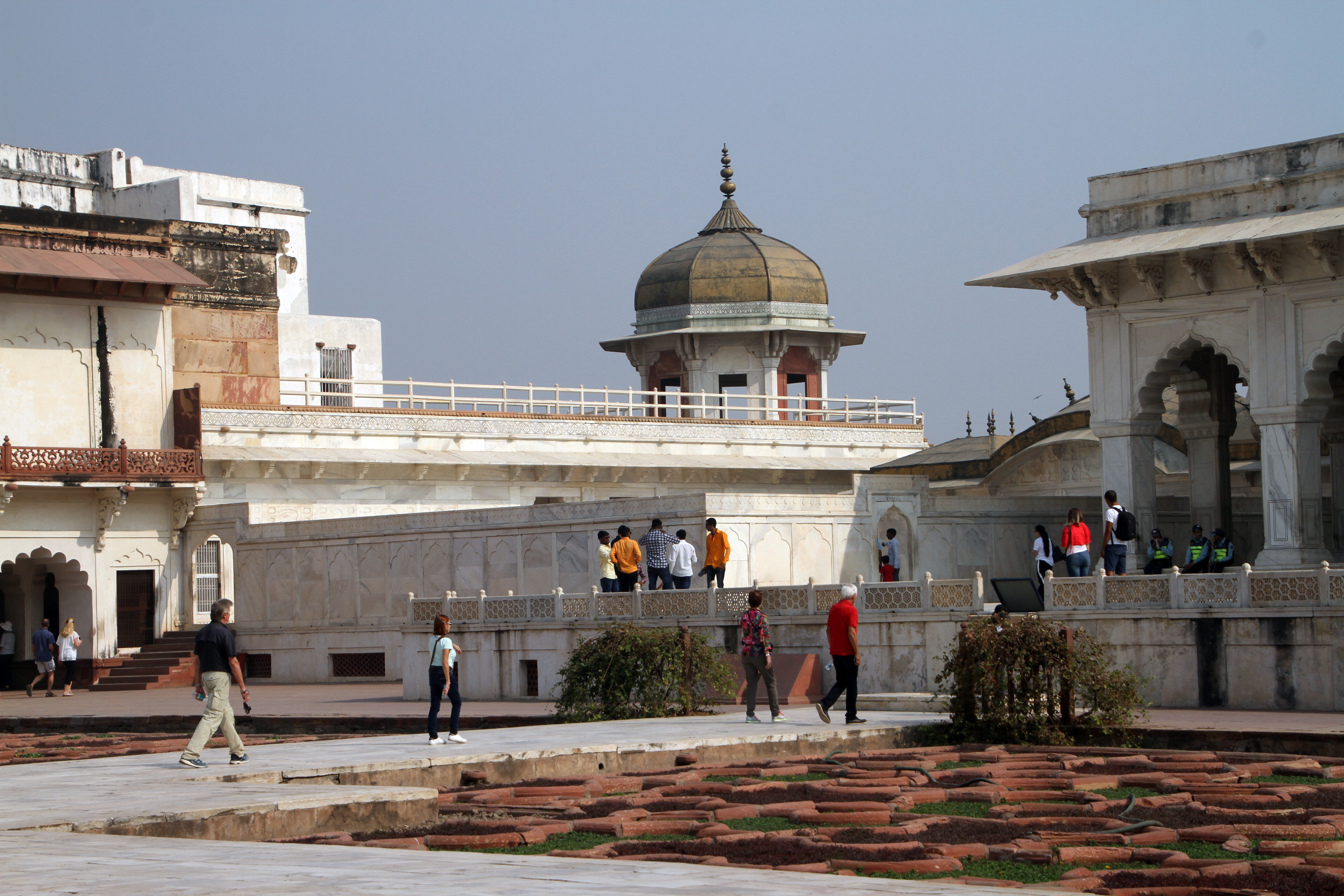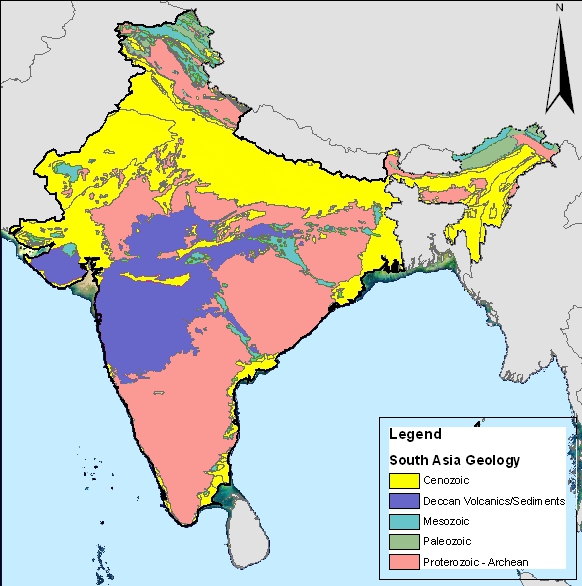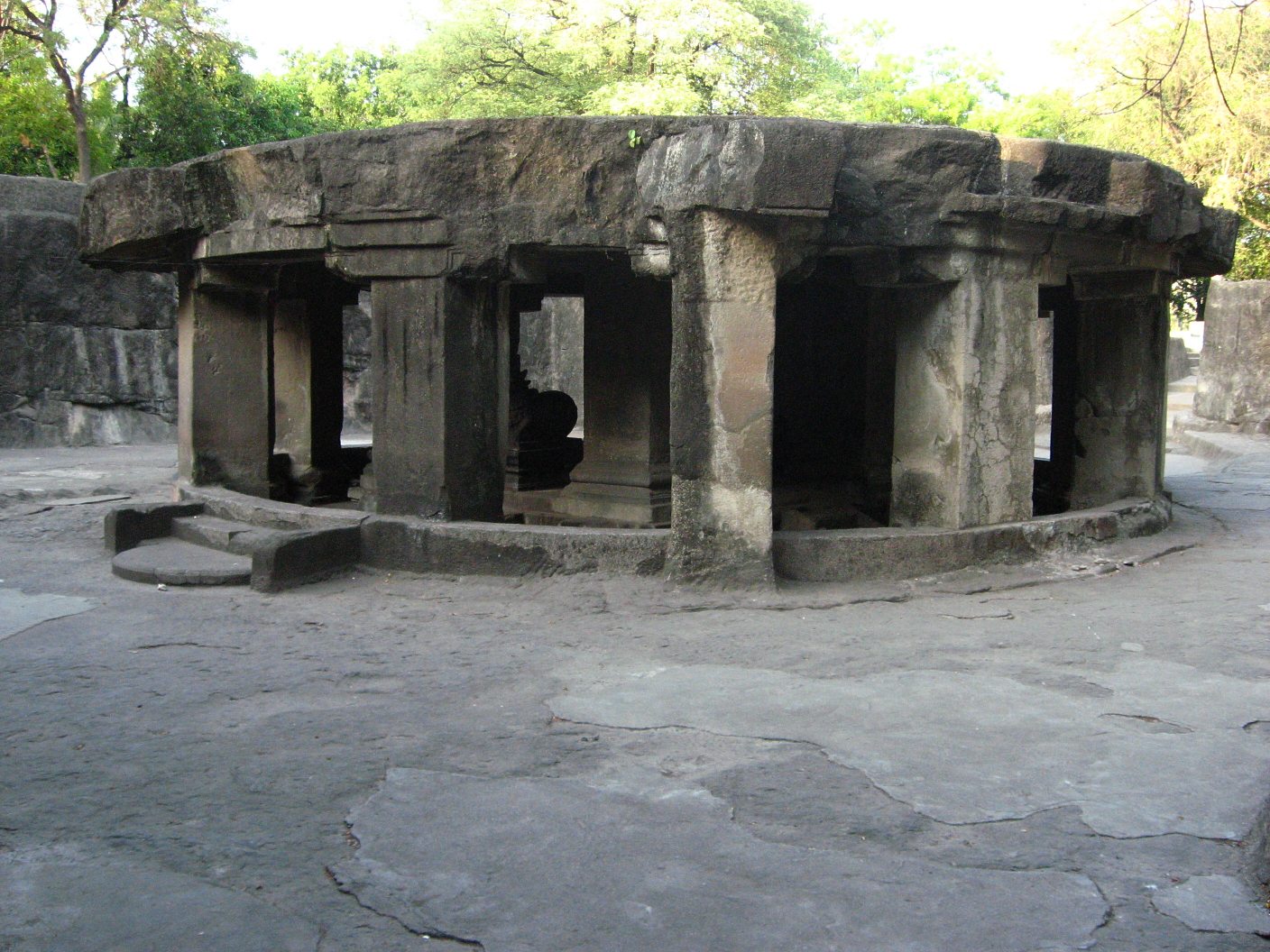|
Verul
The Ellora Caves are a UNESCO World Heritage Site in Aurangabad, India. It is one of the largest rock-cut cave complexes in the world, with artwork dating from the period 600–1000 AD, including Hindu, Buddhist, and Jain caves., Quote: "These 34 monasteries and temples, extending over more than 2 km, were dug side by side in the wall of a high basalt cliff, not far from Aurangabad, in Maharashtra. Ellora, with its uninterrupted sequence of monuments dating from AD 600 to 1000, brings the civilization of ancient India to life. Not only is the Ellora complex a unique artistic creation and a technological exploit but, with its sanctuaries devoted to Hinduism, it illustrates the spirit of tolerance that was characteristic of ancient India." The complex is a leading example of Indian rock-cut architecture, and several are not strictly "caves" in that they have no roof. Cave 16 features the largest single monolithic rock excavation in the world, the Kailash temple, a chariot-shap ... [...More Info...] [...Related Items...] OR: [Wikipedia] [Google] [Baidu] |
Grishneshwar Temple
Grushneshwar Jyotirlinga is a Hindu temple of Shiva in Verul village of Aurangabad district, Maharashtra, India. It is one of the 12 '' Jyotirlinga'' mandirs. The mandir is a national protected site, one and a half kilometers away from the Ellora Caves, north-west of the city Aurangabad, and east-northeast far from Mumbai. Grushneshwar is mentioned in the ''Shiva Purana'', the ''Skanda Purana'', the ''Ramayana'' and the ''Mahabharata.'' Etymology The word ''Ghrneshwara'' means "lord of compassion". History The temple structure was destroyed by the Delhi Sultanate in 13th and 14th centuries. The temple went through several rounds of rebuilding followed by re-destruction during the Mughal-Maratha conflict. Maloji Bhosale (grandfather of Shivaji) first restored it in the 16th century and rebuilt it to its current form in the year 1729, under the sponsorship of queen Gautama Bai Holkar of Indore, after the fall of the Mughal Empire. It is presently an important and active pil ... [...More Info...] [...Related Items...] OR: [Wikipedia] [Google] [Baidu] |
Aurangabad District, Maharashtra
Aurangabad district (Marathi pronunciation: Help:IPA/Marathi, [əu̯ɾəŋɡaːbaːd̪]), officially known as Chhatrapati Sambhajinagar district, is one of the 36 Districts of Maharashtra, districts of the state of Maharashtra in western India. It borders the districts of Nashik District, Nashik to the west, Jalgaon District, Jalgaon to the north, Jalna District, Jalna to the east, and Ahmednagar District, Ahmednagar to the south. Aurangabad, The city of Aurangabad houses the district's administrative headquarters. The district has an area of 10,100 km, of which 37.55% is urban and the rest is rural. Aurangabad District is a Tourism in Marathwada, major tourism region in Marathwada, with attractions including the Ajanta Caves and Ellora Caves. Geography Aurangabad District is located mainly in the Godavari River Basin and partly in the Tapti River Basin. The district is located between 19th parallel north, 19 and 20th parallel north, 20 degrees north longitude and between 7 ... [...More Info...] [...Related Items...] OR: [Wikipedia] [Google] [Baidu] |
List Of World Heritage Sites In Southern Asia
The UNESCO (United Nations Educational, Scientific and Cultural Organization) has designated 66 World Heritage Sites in six countries (also called "Sovereign state, state parties") of South Asia, Southern Asia: Afghanistan, India, Nepal, Pakistan, Sri Lanka and Bangladesh. Bhutan and Maldives, which are also located within the region, do not have any World Heritage Sites. The first sites recognised as World Heritage Sites in South Asia were the Sagarmatha National Park and the Kathmandu Valley in List of World Heritage Sites in Nepal, Nepal, inscribed in 1979. Nepal has currently a total of four sites. List of World Heritage Sites in Sri Lanka, Sri Lanka has eight sites and List of World Heritage Sites in Bangladesh, Bangladesh has three sites. List of World Heritage Sites in Pakistan, Pakistan has six sites. Two sites are located in List of World Heritage Sites in Afghanistan, Afghanistan, both of which are enlisted as endangered. List of World Heritage Sites in India, India is ... [...More Info...] [...Related Items...] OR: [Wikipedia] [Google] [Baidu] |
Kailasa Temple, Ellora
The Kailash (IAST: Kailasa) or Kailashanatha (IAST: Kailāśanātha) temple is the largest of the rock-cut Hindu temples at the Ellora Caves in Aurangabad district, Maharashtra of Maharashtra, India. A megalith carved into a cliff face, it is considered one of the most remarkable cave temples in the world because of its size, architecture, and sculptural treatment. It has been called "the climax of the rock-cut phase of Indian architecture". The top of the structure over the sanctuary is above the level of the court below. Although the rock face slopes downwards from the rear of the temple to the front, archaeologists believe it was sculpted from a single rock. The Kailasa temple (Cave 16) is the largest of the 34 Hindu, Buddhist, and Jain cave temples and monasteries known collectively as the Ellora Caves, ranging for over along the sloping basalt cliff at the site. Most of the excavation of the temple is generally attributed to the eighth century Rashtrakuta king Kris ... [...More Info...] [...Related Items...] OR: [Wikipedia] [Google] [Baidu] |
Marathwada
Marathwada () is a geographical region of the States and territories of India, Indian state of Maharashtra. It was formed during the Nizam of Hyderabad, Nizam's rule and was part of the then Hyderabad State. The region coincides with the Aurangabad division of Maharashtra. It borders the states of Karnataka and Telangana, and it lies to the west of the Vidarbha and east of North Maharashtra, Uttar Maharashtra regions of Maharashtra. The largest city of Marathwada is Aurangabad. Its people speak Marathi language, Marathi and Deccani language, Deccani Urdu (Hyderabadi Urdu). Marathwada is known for its struggle for merger in the Maharashtra state, which is commemorated on 17 September as Marathwada Liberation Day. Etymology The term ''Marathwada'' means ''the house of Marathi speaking people'', that is land occupied by the Marathi-speaking population of the former Hyderabad state during the period of Nizam's rule. The term can be traced to 18th century state records of the Nizam ... [...More Info...] [...Related Items...] OR: [Wikipedia] [Google] [Baidu] |
Traikutakas
The Traikutakas were a dynasty of Indian kings who ruled between 388 and 456. The name "Traikutakas" seems to be derived from the words for a three-peaked mountain ("Tri-kuta"). The Traikutakas are mentioned in Kalidasa's Raghuvamsa, in which they are located in the area of northern Konkan, Kokan. The dominions of the Traikutakas further included Aparanta and northern Maharashtra. The coins of the Traikutaras are found extensively in southern Gujarat, and southern Maharashtra beyond the Ghats. Their design is very close to that of the Western Satraps, from which they probably inherited some territories, and traces of the obverse legend with Greek alphabet, Greek letters can still be seen. History Some scholars theorize that the Traikutakas were a branch of the Abhira dynasty, Abhiras, and refer to them as the "Abhira-Traikutakas". These scholars assume that the Traikutaka records were dated in the so-called Kalachuris of Mahishmati, Chedi-Kalachuri era, starting in 249 CE. Howev ... [...More Info...] [...Related Items...] OR: [Wikipedia] [Google] [Baidu] |
Cretaceous
The Cretaceous ( ) is a geological period that lasted from about 143.1 to 66 mya (unit), million years ago (Mya). It is the third and final period of the Mesozoic Era (geology), Era, as well as the longest. At around 77.1 million years, it is the ninth and longest geological period of the entire Phanerozoic. The name is derived from the Latin , 'chalk', which is abundant in the latter half of the period. It is usually abbreviated K, for its German translation . The Cretaceous was a period with a relatively warm climate, resulting in high Sea level#Local and eustatic, eustatic sea levels that created numerous shallow Inland sea (geology), inland seas. These oceans and seas were populated with now-extinct marine reptiles, ammonites, and rudists, while dinosaurs continued to dominate on land. The world was largely ice-free, although there is some evidence of brief periods of glaciation during the cooler first half, and forests extended to the poles. Many of the dominant taxonomic gr ... [...More Info...] [...Related Items...] OR: [Wikipedia] [Google] [Baidu] |
Deccan Traps
The Deccan Traps are a large igneous province of west-central India (17–24°N, 73–74°E). They are one of the largest volcanic features on Earth, taking the form of a large shield volcano. They consist of many layers of solidified flood basalt that together are more than about thick, cover an area of about , and have a volume of about . Originally, the Deccan Traps may have covered about ,"What really killed the dinosaurs?" Jennifer Chu, MIT News Office, 11 December 2014 with a correspondingly larger original volume. This volume overlies the age Indian Shield, which is ... [...More Info...] [...Related Items...] OR: [Wikipedia] [Google] [Baidu] |
Pune
Pune ( ; , ISO 15919, ISO: ), previously spelled in English as Poona (List of renamed Indian cities and states#Maharashtra, the official name until 1978), is a city in the state of Maharashtra in the Deccan Plateau, Deccan plateau in Western India. It is the administrative headquarters of the Pune district, and of Pune division. In terms of the total amount of land under its jurisdiction, Pune is the largest city in Maharashtra, with a geographical area of 516.18 sq km, though List of cities in India by population, by population it comes in a distant second to Mumbai. According to the 2011 Census of India, Pune has 7.2 million residents in the metropolitan region, making it the List of metropolitan areas in India, seventh-most populous metropolitan area in India. The city of Pune is part of Pune Metropolitan Region. Pune is one of the largest IT hubs in India. It is also one of the most important Automotive industry in India, automobile and Manufacturing in India, manufacturin ... [...More Info...] [...Related Items...] OR: [Wikipedia] [Google] [Baidu] |







